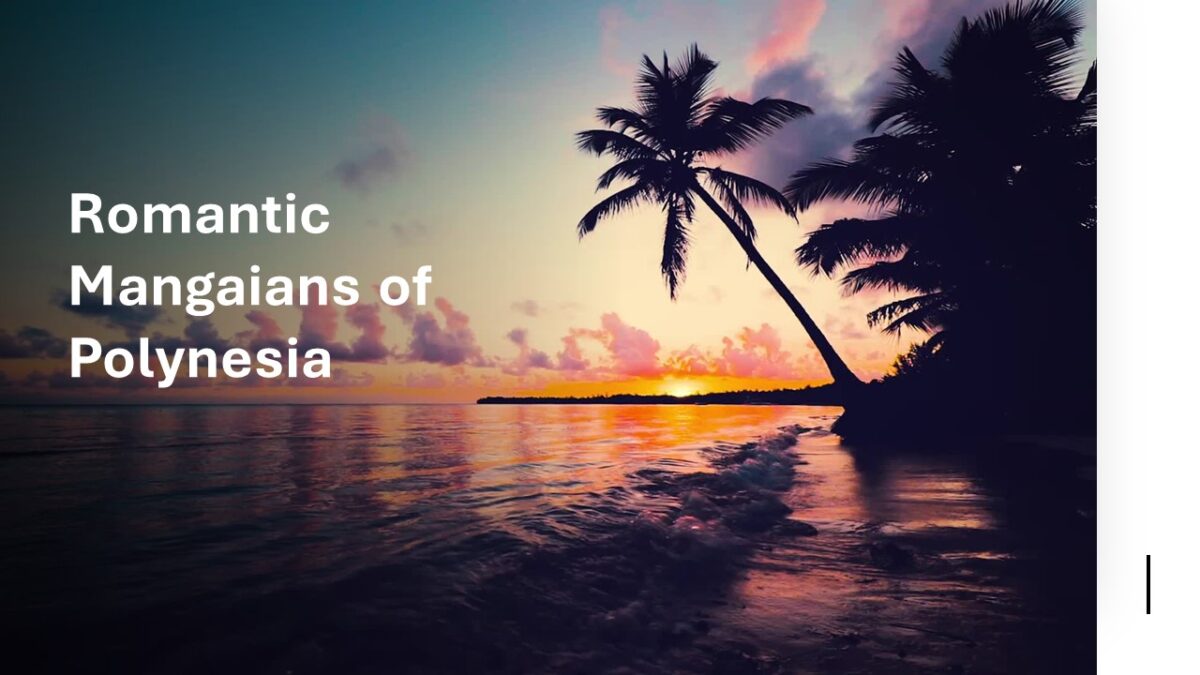How romantic is Mangaian love? Mangaians are the Polynesian people living in the Cook Islands in the South Seas. The early studies of Polynesian love misrepresented Polynesian heterosexual relationship culture as sexually energetic and sensually obsessive, along with free sexual attitudes and behaviors.
In a stereotypical western picture, observers depicted Polynesians as the most sexually motivated people in the world. They fit the old expression,
“There is no sin below the equator.”
In another article, I describe What Polynesian love is.
Early observations downplayed affection and gave the wrong impression that people in the Pacific Islands did not experience emotional and romantic feelings. Recent studies from the 20th and 21st centuries document a more accurate picture of love in Polynesia. I presented it in the article what Polynesian love in Mangaia was.
Here is the case of Mangaian romantic love. What are the three key things that made Polynesian love in Mangaia romantic?
1. Intrusive Thinking About the Partner
The first key sign of passionate and romantic love is the cognitive preoccupation and intrusive thinking about the beloved and the relationship. Harris (1995), as well as other anthropologists, showed that Mangaian men and women often indicated such a state of mind when they talked about their lovers and love relationships.
It is typical for those in the early stages. Being cognitively preoccupied with the beloved, men and women tended to think about their loved ones again and again. The intrusive thoughts about the loved one interfered with the normal course of their daily life. The same intrusive thinking occurred during a forced separation. Their longing during separation made them compelled to seek proximity.
2. The Romantic Perception of the Beloved as a Unique Individual
Western scholarship traditionally defines that the beliefs in the uniqueness of the beloved and the perception of him or her as distinctive from others, as a special and exceptional individual, are the essential features of truly romantic love (Karandashev, 2017, 2019).
Despite misrepresented early anthropological observations of “What Polynesian love is“, Harris (1995) and others discovered indirect and direct evidence that Mangaian men and women recognize their loved ones as especially attractive individuals who are distinct from others. Strong love attraction evolves between certain men and women rather than between others. They believe that their romantic liaisons are exceptional.
Young men may seek sexual opportunities whenever possible. Nonetheless, cautious young women look for a sign of “real love” (inangaro kino, etc.). Women recognize this “real love” as a man’s willingness to forsake all other sexual liaisons. Marriage is viewed as the ultimate manifestation of such exclusivity.
3. Romantic Idealization of the Partner and Relationship
Traditionally, Western scholars present romantic idealization as another defining quality that makes love truly romantic (Karandashev, 2017, 2019). This is the tendency of a lover to focus on the good qualities of the person they love and to ignore, pay less attention to, or make excuses for the bad qualities.
According to anthropological observations, the Mangaian culture tends to publicly segregate boys and girls. Young men usually initiate secret relations, courtships, and premarital heterosexual relationships (e.g., Harris, 1995, see for review Karandashev, 2017).
How Do Young Mangaian Men Idealize Women?
Due to the segregated nature of intergender relationships, young Mangaian men often fall in love with young women by simply seeing them and conversing with them on rare occasions.
Therefore, physical beauty is what initially attracts many men to young women. A woman’s attractive face, flowing hair, and full hips charm a man, while he usually fills in the blanks about the other woman’s qualities. They were supposed to be as enchanting as their physical appearance.
The woman, however, generally thinks that her boyfriend was attracted to her because of her good nature and character. For example, here is how Harris (1995, p. 117) illustrates such an early idealization:
“Maara came to talk to me. He had been waiting, waiting for me to return from Rarotonga. He didn’t forget the time we were in school together. He said to me, “You know what? I’ve been looking at you. I’ve seen you going around.” Then he said that he loved me. He said he had fallen in love with me. Yes, seeing me all around, day and night, waiting for me. I asked him, “Why me?” He said he had seen how I was at school; how we laughed, how I shared with people. I’m just the one he’s looking at. He said his heart was hurting for me.”
How Do Mangaian Young Women Idealize Women?
Mangaian women tend to be less idealistic and more practical in their heterosexual relationships. In the early stages of relationships, they are less prone to such romantic idealization in their perception of men. Their attitude of idealization toward the man often develops later, after the beginning of the courtship.
They are also inclined to ignore, neglect, or diminish, in their perception, the man’s imperfections and flaws. Interviews show that women tend to think positively about their men and their courtships. They focus on their appearance, skills, talents, and personality attributes:
“He was a very good fisherman; he was the best planter; he was a fine musician; he was kinder than the other men”.
Some women acknowledged that their men had the characteristics of womanizers. Nevertheless, they suspended their mistrust and perceived him as having a good image, despite their public reputation.
There are also The three other things that made the love of the Polynesian Mangaians “romantic”
